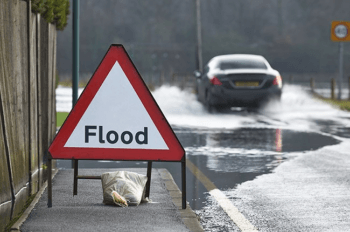Texas A&M At Galveston Gets Grant To Study Flood Risks

An international research consortium led by Dr. Sam Brody, Professor in the Department of Marine Science and Director of the Center for Texas Beaches and Shores (CTBS) at Texas A&M University at Galveston was awarded a prestigious Partnerships for International Research and Education (PIRE) $3.6 million grant by the National Science Foundation’s Office of International Science and Engineering. The team will conduct assessments, research and education activities focused on the physical flood risk characteristics, land use change, the built environment and mitigation techniques to reduce risk and vulnerability to damaging coastal floods.
Dr. William J. Merrell, Professor and the George P. Mitchell `40 chair in the Department of Marine Sciences at Texas A&M University at Galveston will be a member of the investigative team that includes scientists from Jackson State University, Rice University, University of Houston, Texas A&M University, Texas Sea Grant and Delft University of Technology in the Netherlands. This international consortium will allow U.S. researchers the ability to leverage Dutch data, methods, and facilities associated with flood management.

Dr. Brody, holds the George P. Mitchel `40 Chair in Sustainable Coasts and directs the Center for Texas Beaches and Shores (CTBS). He also directs the Institute for Sustainable Coastal Communities at the Galveston campus. His years of research have led him to advise communities on the vulnerabilities of living along a coast.
Coastal floods continue to be the costliest and most disruptive natural hazard worldwide, as was made clear by the impact of major storms hitting the shores of the U.S. in recent years.. Flood risk and associated losses can only be understood and eventually reduced through integrated investigation across multiple disciplines, settings, and international boundaries. There is a critical need for a program that will lay a foundation for decision making aimed at increasing the resiliency of coastal communities.
“Due to the destruction caused by flooding from Hurricane Ike, we know very well the impact coastal flooding has on coastal communities,” said RADM Robert Smith III USN (Ret.), Texas A&M University at Galveston. “Galveston was hit hard by Ike’s flooding as was nearby coastal communities. This research is crucial to continued growth as well as for the protection of people’s lives.”
Through investigating multiple case studies in both the U.S. and the Netherlands, faculty from engineering, architecture, economics, and planning will address several research questions, including: 1) what are the underlying characteristics of physical flood risks; 2) why are human communities and the built environment so vulnerable to flood impacts, and how will this increase in the future; and 3) which mitigation techniques, both structural and non-structural, are most effective in reducing the adverse impacts of floods?
Media contact: Bob Wright, Texas A&M University at Galveston.





